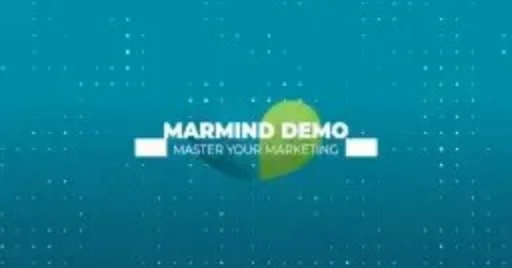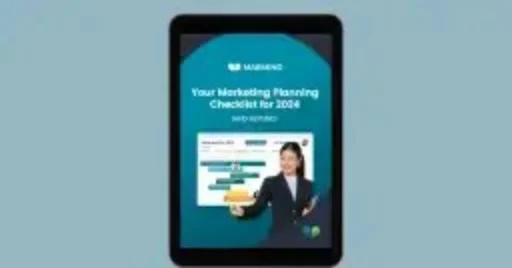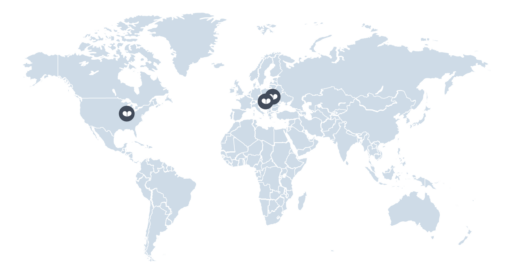Inbound and outbound marketing strategies are like two planes departing from the same airport.
As they leave, they’re heading to various destinations all over the world: communication and promotional channels like email, TV, social media, or content like this one.
But upon their return, they bring back new passengers (leads) from such a diverse range of these destinations.
All coming back to that one airport – your business.
What is Inbound Marketing?
Imagine inbound marketing as a plane arriving at your airport, loaded with passengers from various inbound destinations.
Each passenger represents a lead, and the inbound destinations symbolize the diverse channels through which you’ve attracted these leads – we’ll talk about them in a second. As the pilot, it’s your job to ensure a smooth landing, providing the leads with valuable experiences that cater to their specific needs.
If they were promised a comfortable journey with exceptional service, it’s essential to deliver on that promise.
Just as you would provide exceptional service to passengers in an airport, inbound marketing aims to build trust.
This approach ultimately guides your passengers (leads) to become loyal brand advocates. And in a world where loyalty is the new gold, that’s something that should truly matter to you and your business.

Inbound Marketing Tactics
- Blogging & SEO: Optimize your website and create content for search engines to address pain points and attract organic traffic.
Example: Perform keyword research and incorporate relevant keywords into your blog posts. - Social media: Leverage social media platforms to engage with your audience and build brand awareness.
Example: Share a behind-the-scenes look at your company on Instagram stories. - Email marketing: Nurture leads and keep subscribers informed by sending targeted, personalized emails.
Example: Create a monthly newsletter that highlights recent company updates. - Lead magnets: Offer valuable resources, such as whitepapers, in exchange for contact information to grow your email list.
Example: Create a free eBook on industry trends and redistribute it. - Video marketing: Create and share informative videos to engage your audience and foster thought-leadership.
Example: Produce a series of how-to videos explaining different features of your product. - Influencer marketing: Collaborate with influencers in your industry to reach a larger audience and gain credibility.
Example: Invite Instagrammers to share your products on their feed. - User-generated content: Encourage customers to share their experiences with your brand through reviews or social media posts.
Example: Launch a hashtag campaign on Instagram and feature user-submitted photos on your website. - Webinars & podcasts: Host live, interactive sessions on relevant topics to educate your audience and showcase your expertise.
Example: Conduct a webinar on best practices for picking a service provider in your industry.
What is Outbound Marketing?
In contrast to inbound marketing, outbound marketing pushes messages and promotions to a broad audience.
Think of outbound marketing as a plane taking off from your airport, loaded with messages that are broadcasted to a wide audience, attempting to capture their attention to choose your offer.
Each outbound marketing channel represents a different departure route for your promotional messages. As the pilot in this scenario, it’s your responsibility to ensure that these messages are powerful and compelling enough to grab the attention of your target group amid the noise of competing airlines – other advertisements.
Outbound Marketing Tactics
- Cold Emailing: Reach out to potential customers with personalized, targeted messages that showcase the value of your product or service. Example: Send an email sequence to prospects, highlighting case studies and offering a free consultation.
- Telemarketing: Use phone calls to engage with prospects, pitch your product, and gather valuable information about their needs.
Example: Train your sales team to schedule product demos via cold calls. - Direct mail: Send physical mail, such as brochures, to your target audience with personalized offers or promotions.
Example: Launch a direct mail campaign offering a special discount in a specific location. - Paid advertising: Create and run paid ads (including retargeting) to reach specific audience segments based on their demographics, interests, and behaviors. Example: Launch a Facebook ad campaign targeting users who have shown interest in similar products or services

- Conference and events: Sponsor and/or participate in industry events, and trade shows to showcase your products and network with potential clients.
Example: Set up an interactive booth at a major industry event and deliver a keynote presentation. - Public Relations: Build relationships with journalists to secure media coverage and promote your brand.
Example: Pitch a newsworthy story about your company to relevant publications for sponsored content. - Referral Programs: Encourage your existing customers to refer some clients to your business by offering incentives.
Example: Implement a referral scheme that offers free services to customers who successfully recommend new clients to your business.
How to Make Inbound and Outbound Work Together
Cross-Tackle Your Content
Within your inbound marketing efforts, create engaging content – for example, an e-book. Then use outbound marketing channels like sponsored social media posts to promote it, driving traffic back to your website.
Run Retargeting Campaigns
Re-engage users who have visited your website or interacted with your content but haven’t yet converted. This bridges the gap between your inbound and outbound marketing efforts, as you’re reaching out to an audience that has already shown interest in your brand.
Leverage Omnichannel Email Marketing
Utilize both inbound and outbound strategies within your email marketing campaigns. Segment your audience based on their interactions with your brand and provide them with personalized content and offers.
But to do it on scale, you can incorporate outbound tactics such as cold outreach to potential leads who may not be aware of your brand yet.

Integrate Social Media Tactics
Merge inbound and outbound efforts on social media platforms. For example, share valuable content and engage with your audience organically – while using targeted ads to expand your reach and attract new followers.
To effectively execute these combined inbound and outbound strategies into one omnichannel communication powerhouse, you need a centralized hub that seamlessly organizes your marketing tactics.
And MARMIND can be one of them. Check, how and why, below.
How Can MARMIND Help You Leverage Both Tactics
MARMIND is a powerful MRM tool for CMOs looking to harmonize their inbound and outbound marketing efforts while maximizing their budget efficiency. Offering a unified platform that combines plans, budgets, and results, MARMIND helps CMOs make data-driven decisions that better navigate their business’ flying direction.
The platform’s dynamic marketing planning feature turns your strategy into a cohesive plan. And with cross-team collaboration at its core, MARMIND streamlines communication between departments and stakeholders.
With a centralized content and digital asset management platform, you can eliminate the need for multiple file-sharing apps. Storing and comparing different versions of your assets can help avoid any potential business challenges on route.

When it comes to budget management, MARMIND offers an efficient solution that takes the guesswork out of allocating resources for your inbound and outbound marketing campaigns. The platform’s budget and spend management feature allows CMOs to create top-down budgets easily, monitor remaining funds, and track expenses, providing a comprehensive view of all marketing investments.
And to top it off, MARMIND’s performance and control capabilities deliver insightful analytics. Via establishing relevant KPIs and tracking campaign performance, you can maintain control over your marketing strategy and identify areas where resources can be reallocated to maximize impact.
Ready for Boarding at Gate MARMIND
Much like a bustling airport, the key to success in marketing lies in effectively managing the flow of inbound and outbound traffic. Skillfully balancing and integrating both marketing strategies, you can create a fully functional marketing ecosystem that delivers.
This attitude ensures the altitude: your target audience being consistently engaged and nurtured, so you can be well on your way to soaring to new heights in your marketing endeavors.
Author

Peter Fechter
Peter is Digital Marketing Manager at MARMIND and mainly responsible for website and lead management. When he's not busy creating content, he is developing new strategic approaches for campaign planning.
If you want to plan, manage, track, and execute marketing campaigns using an intuitive platform, MARMIND is the MRM you need. It’s highly customizable and molds itself around your unique marketing processes.
It brings your teams closer and streamlines communication, making you more productive and profitable. With MARMIND on your side, your teams have a constant overview of time, budget, and resources, acting as a compass guiding you toward your marketing goals.
If you’re the pilot of your marketing department, MARMIND is the cockpit that empowers you to steer your marketing to a higher altitude.











